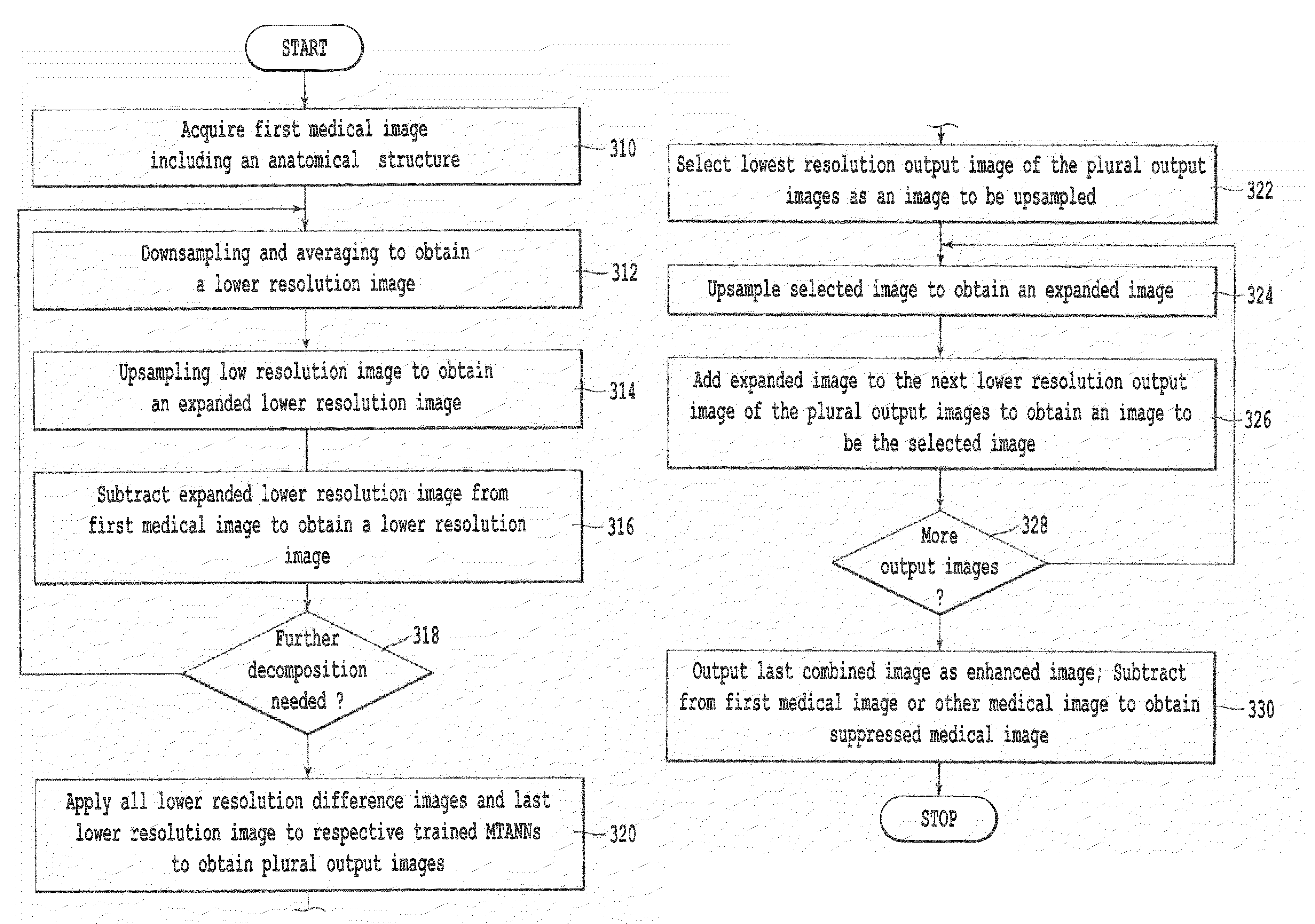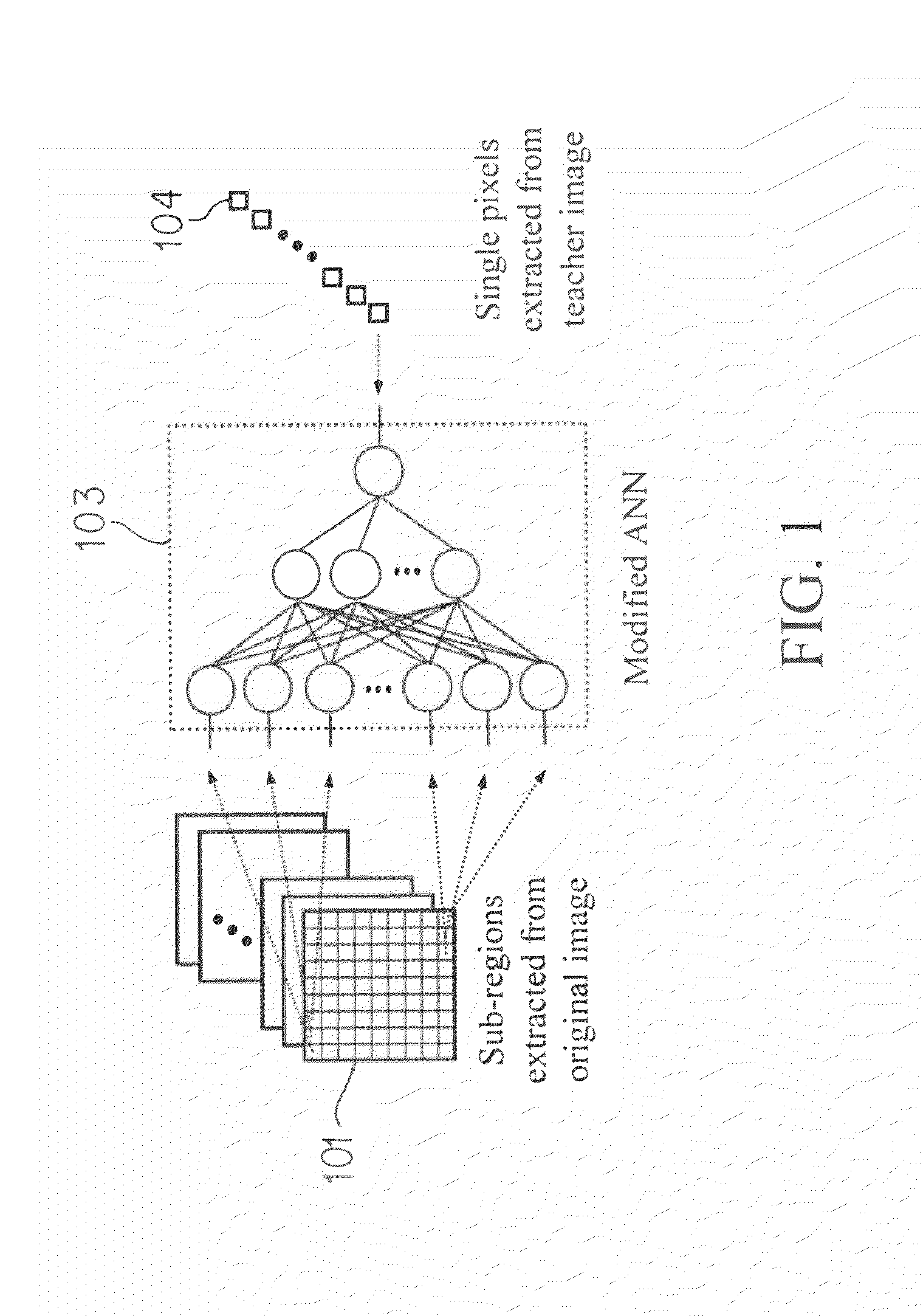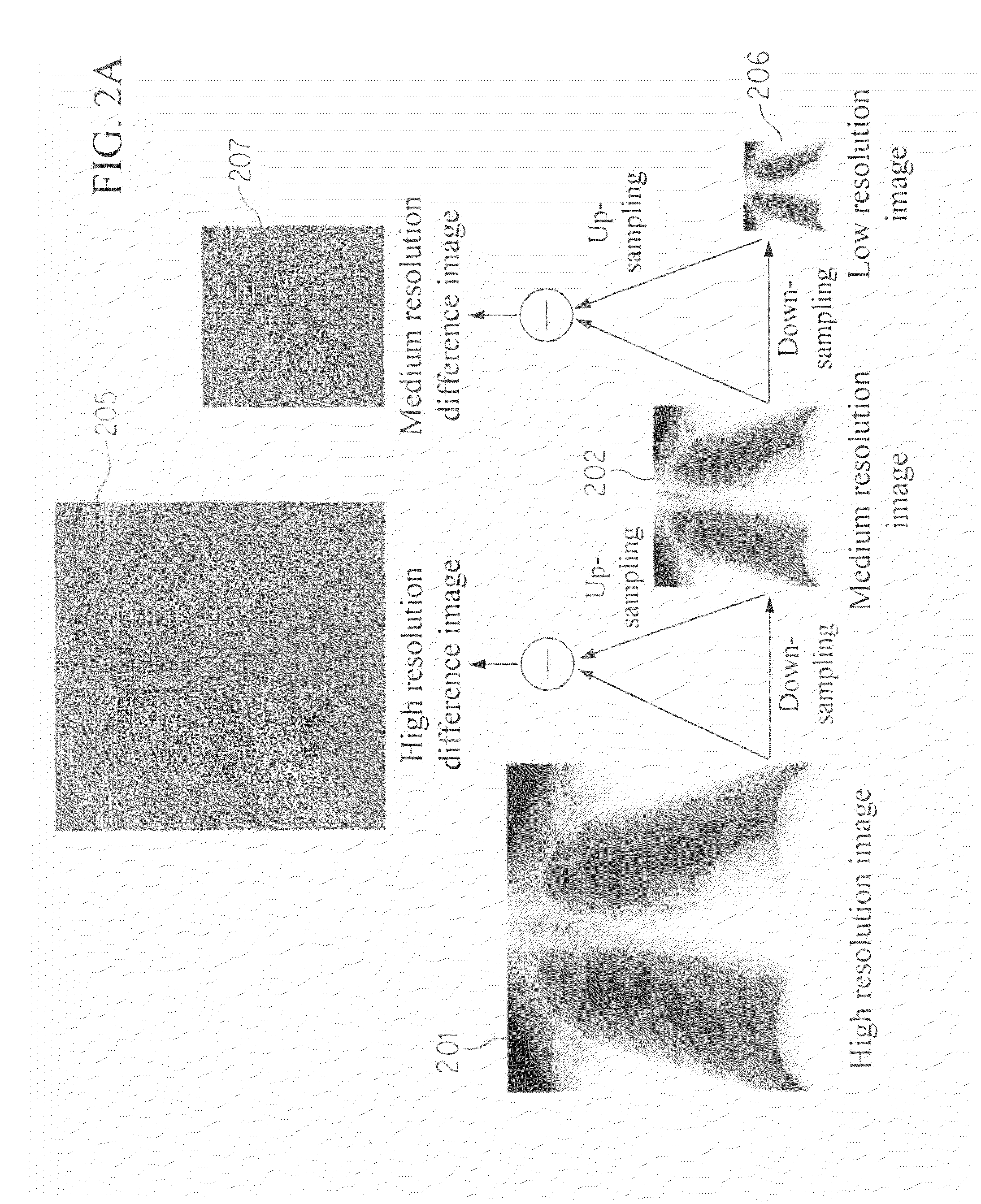Image modification and detection using massive training artificial neural networks (MTANN)
a massive training and artificial neural network technology, applied in image enhancement, image analysis, instruments, etc., can solve the problems of radiologists failing to detect lung nodules, and radiography failing to detect nodules, etc., to suppress the contrast of ribs and clavicles
- Summary
- Abstract
- Description
- Claims
- Application Information
AI Technical Summary
Benefits of technology
Problems solved by technology
Method used
Image
Examples
Embodiment Construction
Suppression of Anatomical Structure
[0107]The present invention is directed to a system for modifying the appearance of an anatomical structure in a medical image. The system includes an image processing device that is trained to modify the appearance of a particular anatomical structure (e.g., ribs in a chest radiograph). Massive-training artificial neural networks (MTANNs) are particularly well suited to serve as the image processing device, although other the present invention is not limited to the use of MTANNs. Any image processing device that can be trained to recognize a particular anatomical structure using a teacher image may be used to practice the method of the present invention. For example, image-learning machines could be used as the image processing devices in the present invention. Image-learning machines include various learning machines that can be applied to image processing, e.g., artificial neural networks, multi-class classifiers, and sophisticated filters that ...
PUM
 Login to View More
Login to View More Abstract
Description
Claims
Application Information
 Login to View More
Login to View More - R&D
- Intellectual Property
- Life Sciences
- Materials
- Tech Scout
- Unparalleled Data Quality
- Higher Quality Content
- 60% Fewer Hallucinations
Browse by: Latest US Patents, China's latest patents, Technical Efficacy Thesaurus, Application Domain, Technology Topic, Popular Technical Reports.
© 2025 PatSnap. All rights reserved.Legal|Privacy policy|Modern Slavery Act Transparency Statement|Sitemap|About US| Contact US: help@patsnap.com



